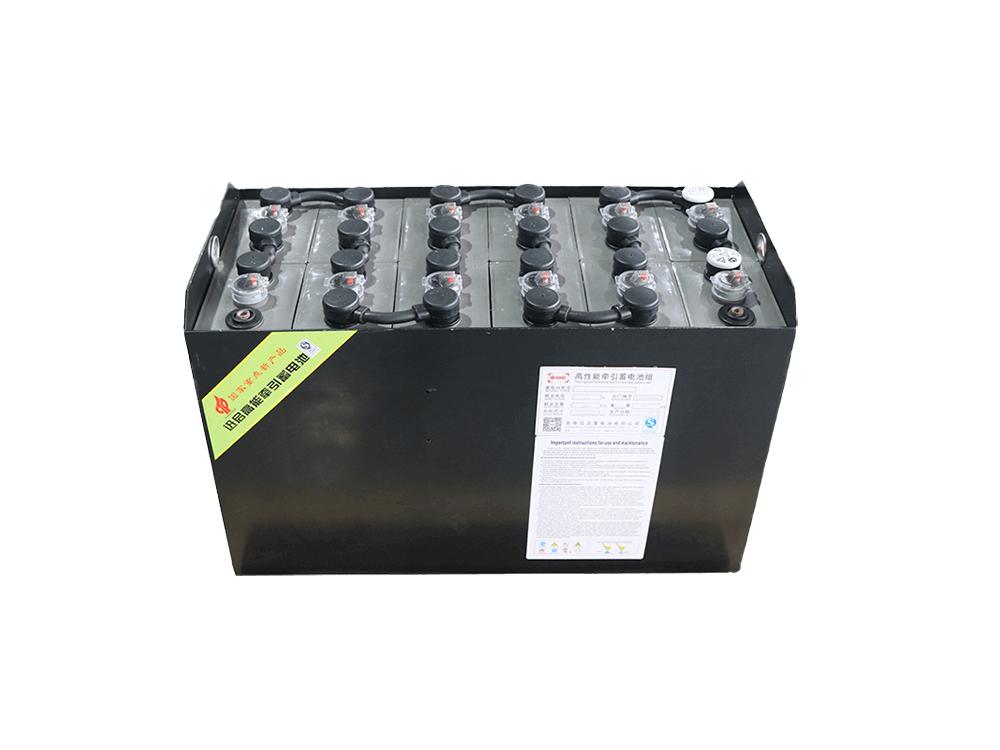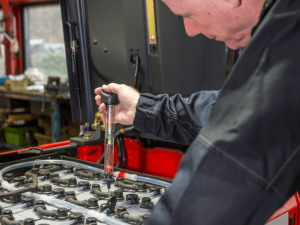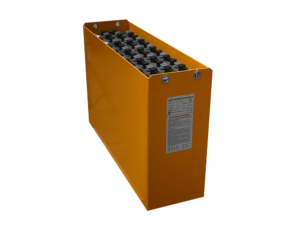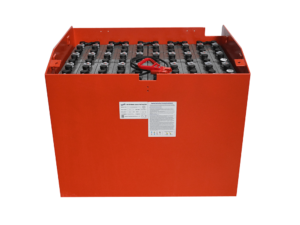Proper maintenance is essential for optimizing the performance, longevity, and safety of forklift batteries. This article provides valuable insights into improving maintenance practices for forklift battery, including monitoring fluid levels, cleaning the battery surface, implementing balanced charging techniques, safe storage procedures, handling electrolytes, and managing end-of-life batteries.
By following these guidelines, you can enhance the efficiency and lifespan of your forklift batteries while ensuring their reliable power supply for your daily operations.
Índice
Fluid Level Monitoring:
Regularly check the electrolyte fluid level of your forklift batteries to prevent damage to the battery plates and separators. Low fluid levels can significantly reduce battery life. Open the filling cap and ensure the fluid level is above the bottom platform inside. If it falls below, add distilled or deionized water accordingly.
Terminal and Cable Maintenance:
Frequently inspect the battery terminals and cables for corrosion caused by oxidation. Corroded connections can hinder battery performance. Additionally, check for any deformities or signs of overheating in the battery covers.
Surface Cleaning:
Maintain a clean and dry battery surface to prevent electrical leakage. Dirt accumulation on the surface can lead to short circuits and terminal corrosion. Use a damp cloth for cleaning, ensuring it is static electricity-free. If your battery box lacks liquid discharge holes, avoid rinsing with water to prevent excessive accumulation that can corrode the casing. For batteries with liquid discharge holes, rinse them slowly in an open area.
Carregamento equilibrado:
Implement balanced charging once a month to maintain battery capacity and extend its lifespan. This technique involves low current charging over an extended period.
To perform balanced charging, start with a regular charging process. Once charging is complete, activate the balanced charging mode and continue for 24-36 hours. During this process, measure and record the voltage, density, and temperature of each individual battery. Adjust the density and fluid level of the electrolyte according to the user manual’s specifications before completing the charging process.

Safe Storage:
Store forklift battery in a well-ventilated and cool area to prevent short circuits. Avoid exposing them to rainwater, as it can cause short circuits, hydrogen gas release, and potential fires. Ensure your storage location is adequately shaded and properly ventilated.
Electrolyte Handling:
When handling electrolyte, take precautions to prevent splashing and wear appropriate protective gear. Use a suction-type hydrometer to check the specific gravity of the electrolyte. Consult with professionals for tasks such as replenishing electrolyte or managing electrolyte leakage caused by battery tilting or damage.
End-of-Life Battery Management:
As batteries approach their end-of-life, the electrolyte in individual cells decreases rapidly. Replenish distilled water daily in these cases.
For disposal of used batteries, discharge the electrolyte and consult the battery manufacturer to inquire about recycling services.
Additional Precautions:
- Wear insulated gloves when performing maintenance to protect against electric shocks.
- Ensure the battery temperature does not exceed 60°C during use.
- Avoid placing repair tools or other metal objects on the battery surface.
- Replace batteries if their capacity drops below 80% of the initial capacity based on regular inspections.
- In case of electrolyte contact with the skin or eyes, flush with water and seek immediate medical attention.
- If electrolyte spills onto clothing, remove the clothes immediately, rinse with water, and wash with a weak alkaline soap solution.
- Neutralize electrolyte leakage with lime, strong soda ash, or baking soda, followed by flushing with water.
Conclusão:
By implementing improved maintenance practices for forklift batteries, you can enhance their performance, lifespan, and safety. From monitoring fluid levels and cleaning the battery surface to implementing balanced charging and proper electrolyte handling, each step plays a crucial role. Adhering to recommended guidelines and seeking professional assistance for repairs and end-of-life battery disposal are essential. By adopting these practices, you can optimize the performance of your forklift batteries, ensuring reliable power supply for your daily operations.
Para qualquer assistência ou informação adicional, não hesite em contactar:
Shanghai Zhongsheng Industrial Co., Ltd
Sítio Web: zospower.com
Telefone: +86-15026665707
Correio eletrónico: [email protected]


